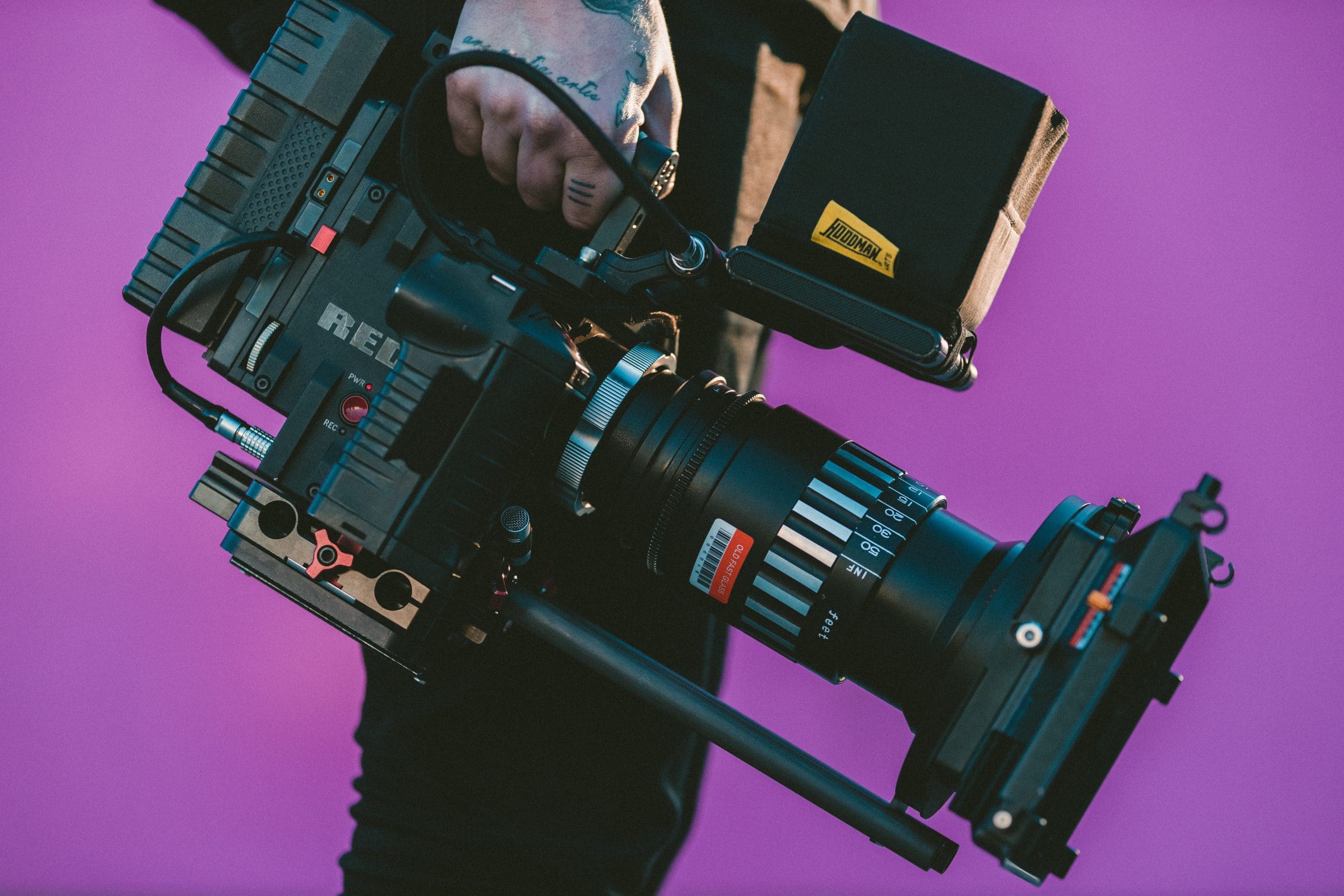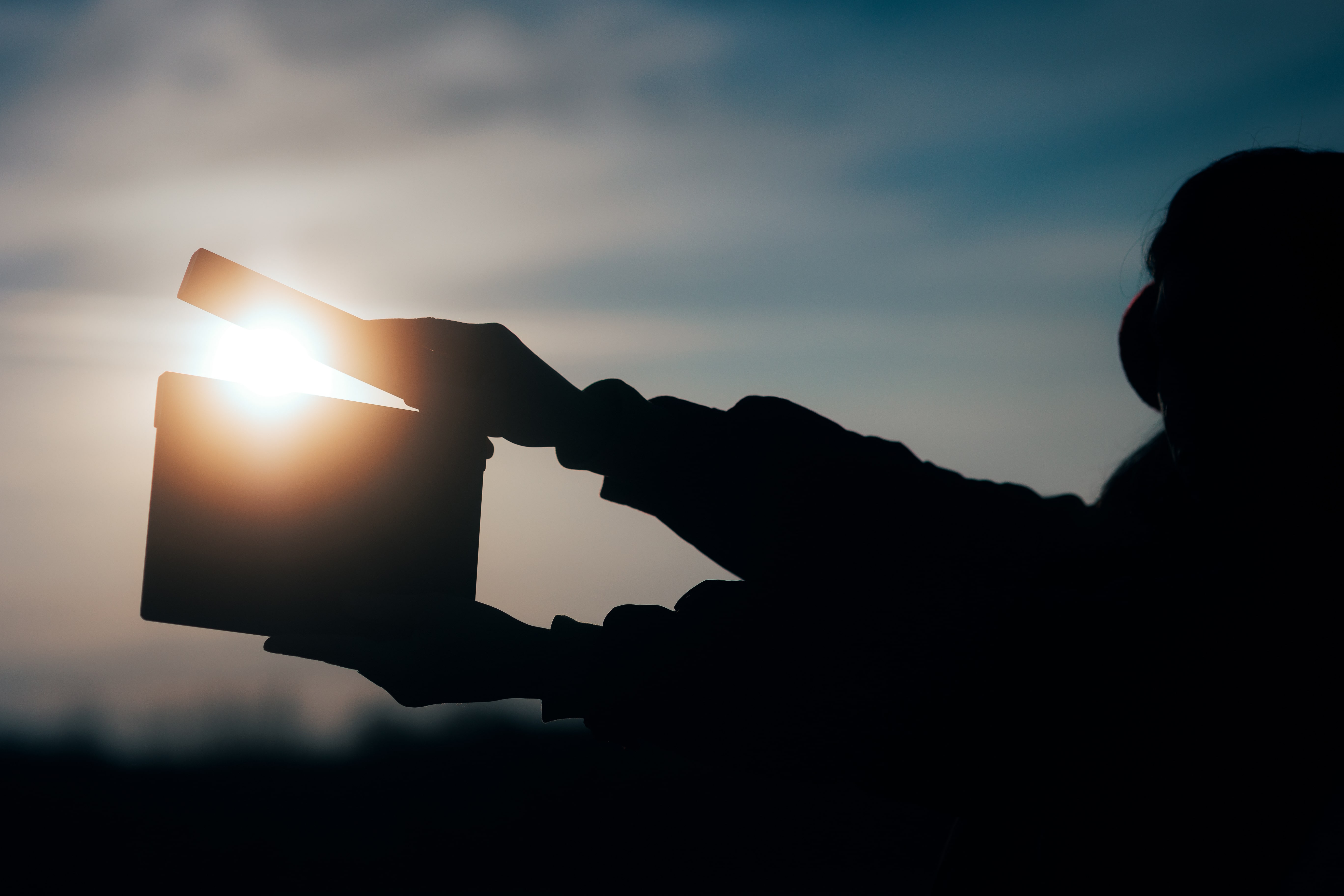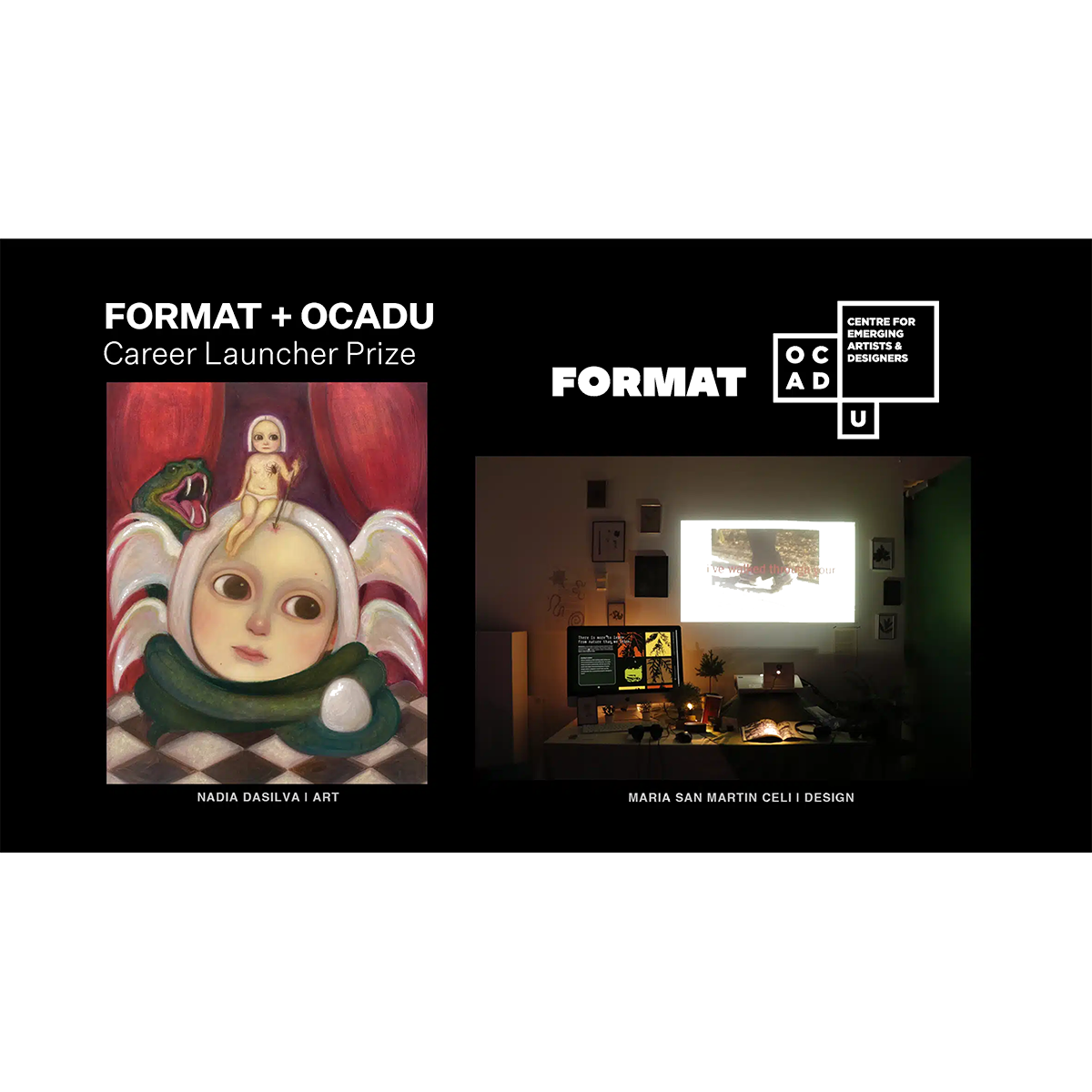Cinematography is an essential part of filmmaking. It’s about creative visuals that reinforce a narrative and give the audience an emotional experience. It’s less about the equipment you use and more about how you use it, but this fact is often overlooked by contemporary filmmakers.
LA-based cinematographer Alicia Robbins (The Wedding Invitation, Dawn of the Planet of the Apes) explains, “In the digital age, anyone can buy and own their own camera. Producers and directors are made to believe that if they don’t shoot with the Arri Alexa, then their movie isn’t a movie. When did producers’ and directors’ focus switch from trying to find a cinematographer that understands good story, lighting, composition?”
Cinematographers are as much storytellers as directors—the difference is that they direct visuals instead of actors. “We are telling emotional stories with the images; it’s not just making beautiful pictures. I think that is a big misconception. People think, ‘It’s good cinematography because it’s beautiful,’” said Rodrigo Prieto during this year’s awards season The Hollywood Reporter cinematographers roundtable. Prieto was nominated for an Oscar for his work on Martin Scorsese’s Silence, and was also the cinematographer for The Wolf of Wall Street, 8 Mile, and Brokeback Mountain.
His sentiment was echoed by the other cinematographers attending the THR roundtable, including Oscar-nominated Caleb Deschanel (The Passion of the Christ). “More so than going out and shooting a beautiful sunrise or some incredible image, some things that I shoot that are not very interesting embody a certain emotion that is really powerful in the context of the film,” he said.
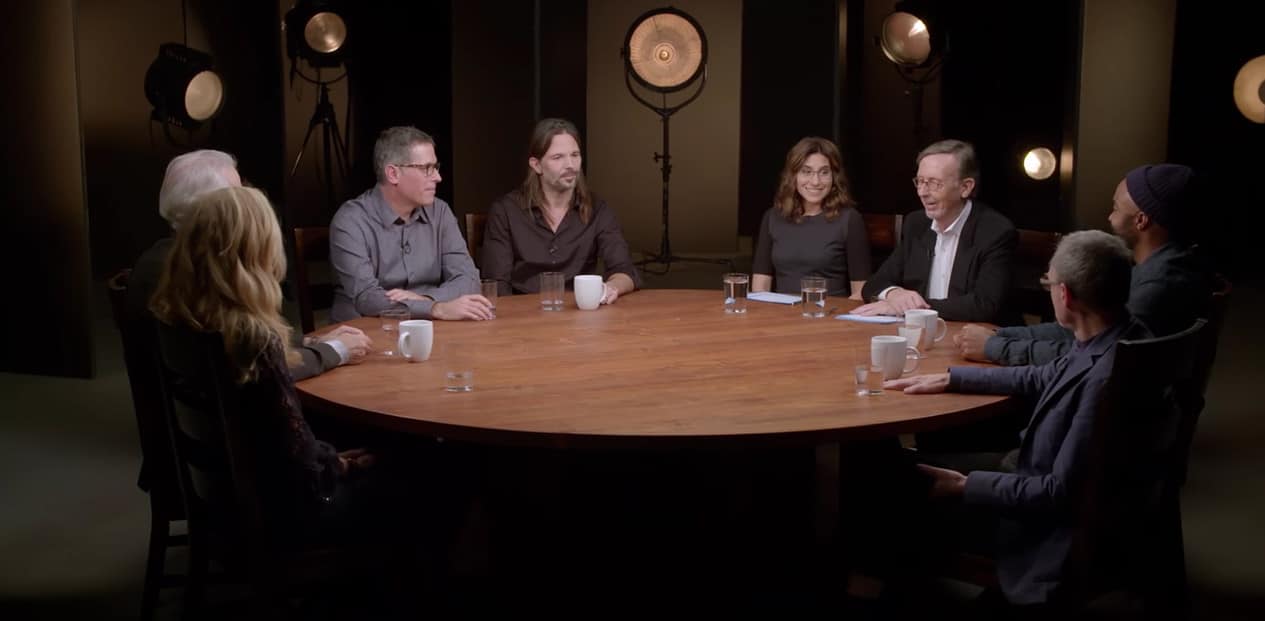
THR’s Oscar Roundtable series featuring Rodrigo Prieto (‘Silence,’ ‘Passengers’), Linus Sandgren (‘La La Land’), John Toll (‘Billy Lynn’s Long Halftime Walk’), Charlotte Bruus Christensen (‘Fences,’ ‘The Girl on the Train,’), Bradford Young (‘Arrival’) and Caleb Deschanel (‘Rules Don’t Apply’).
To craft visuals that heighten and underscore a narrative, cinematographers must understand and modulate camera movement, camera placement, composition, focus, and, most importantly, lighting. Light is the main filmmaking tool that distinguishes raw home video from professional filmmaking. For one, people and locations don’t look the way our eyes perceive them once they’ve been captured by a camera, and so it’s the cinematographer’s job to use precise lighting to create realism. But much more significantly, cinematographers use lighting as an indicator of nonverbal mood and emotion in a film. A good cinematographer taps into the ethos of a scene in the context of a narrative arc and uses light to underline the subtleties and emotional subtexts of the plot.
In reality, that “professional” look that’s sought after by emerging filmmakers is largely constituted by basic elements of image acquisition that are present in any professional film and have little to do with the artistic choices made by cinematographers. These technical specifications are overseen by a digital imaging technician who makes sure the equipment is personalized to capture the cinematographer’s creative vision.
These in-camera specifications include resolution, which is determined by the number of photosites in the camera’s sensor, colour sampling, which is the dynamic of brightness to colour within footage, and shutter, which determines how the camera will capture movement. None of these significantly sways image quality on its own, but rather must be employed in unison to achieve the best rendering of the light, position, and movement the cinematographer has selected for a given shot. A cinematographer’s real job is to make the visuals serve the story, not to make the visuals look professional.
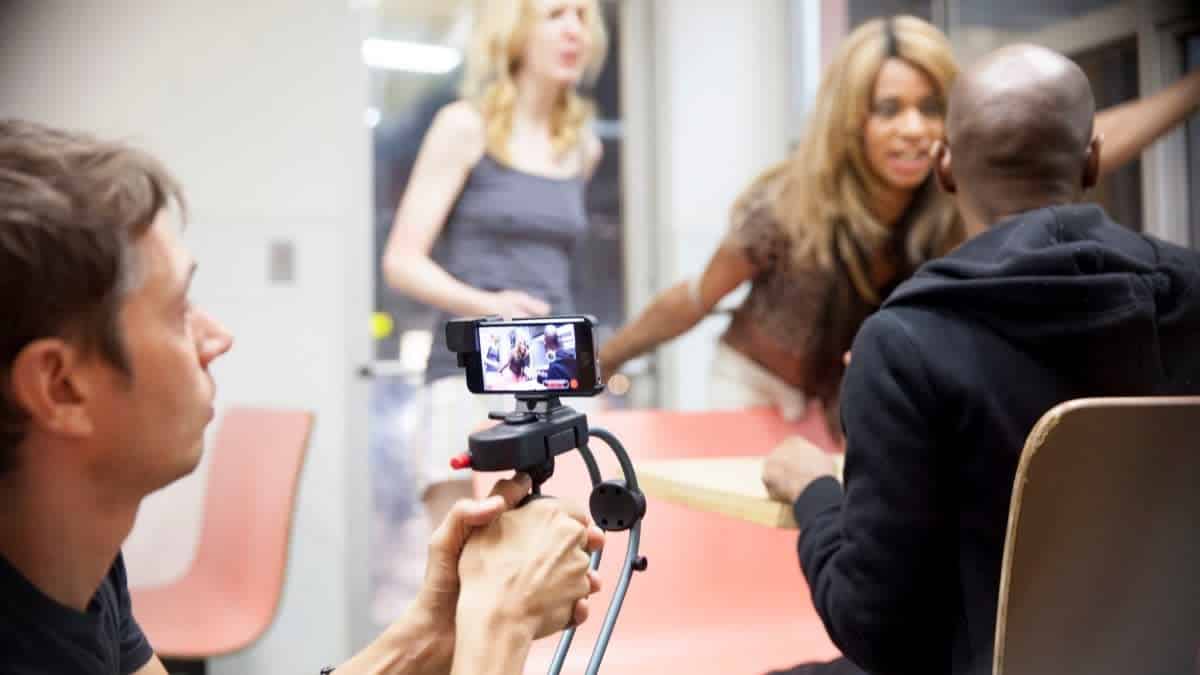
Tangerine filming behind the scenes via
The 2015 film Tangerine, which was shot on an iPhone 5S, is a strong example of a film that employs nuanced cinematography to viscerally portray the experience of its characters. Director Sean Baker and his collaborator Radium Cheung, who together shared cinematography credit on the film, choose to shoot with a specific anamorphic lens adaptor that allowed the iPhone to capture a 30 per cent wider image than usual (2.4:1 instead of 16:9).
Tangerine follows two transgender sex workers on their one-day mission to find a woman on the streets of Los Angeles, and a majority of the film portrays them walking down sidewalks, waiting for buses, and arriving at different locations. Filming with a wide angle adapter accentuates the flat, sprawling concrete that’s characteristic of L.A., allowing long strips of sidewalk and storefront to form parallel lines that make the audience feel like they’re on the gritty street level.
Additionally, many scenes in Tangerine were shot at dusk with high colour saturation, giving the film a “sunset” aesthetic. This visual tone of transitioning from one time of day to the next makes us feel the momentum of the characters’ quest. It’s these types of cinematographic decisions that really capitalize on what moviemaking has to offer.
One factor that may be partially responsible for misconceptions about what effective cinematography entails is the frequent lack of attention given to the department by award shows. Films that are singled out by the Oscars and Golden Globes don’t often showcase audacious and nuanced achievements in lighting and aesthetic storytelling.
Take the 2016 Academy Awards Best Picture winner, Spotlight, which centres around an interesting and important story yet features a dull and uninspired visual style. Spotlight largely employs fluorescent office space lighting and generic shots that put the full burden of deep engagement on the words being said by the actors. Add to that its flat, grey color grading and Spotlight is an example of an award-winning film with a strong plot, strong directing, and strong acting that garnered accolades despite lacking substance in one of filmmaking’s most crucial departments.
Only a very small number of Academy-awarded Best Pictures are also recognized by the American Society of Cinematographers—a guild that’s seen as the authority on accomplishments in the cinematographic arts—or win Oscars for best cinematography. In the last 19 years, only three films awarded an Oscar for Best Picture have also received the ASC award for cinematography or the cinematography Oscar: Birdman, Slumdog Millionaire, and American Beauty. The fact that La La Land took home the 2017 cinematography Oscar award over Moonlight, Silence, and Manchester By The Sea is a further indicator that, by and large, the Academy lauds films that have more surface-level visual styles rather than nuanced and complex cinematography. Given the popularity of the Oscars and other awards shows, this phenomenon could help explain a general under-appreciation for the full potential of cinematography as an art form.
Worthwhile, penetrating, immersive cinematic experiences are about many nuances coinciding to create a film that’s more than the sum of its parts. While cinematography may seem insignificant at first glance, it’s important for creating films that are emotional experiences as well as informational ones.
As Deschanel put it, “You can look at your dailies and think that’s not very interesting. But you know when it’s put into the context of the whole movie it’s going to have a certain emotional power that’s important to telling the story.”
Read more about filmmaking:
‘The Walking Dead’ Director Michael Satrazemis Shoots Zombies With Film
The Brazilian Illustrator Who Sketched an Oscar-Nominated Feature Film
Saturday Night Live’s Colorist Josh Bohoskey Gives Feeling To Film
Additional reporting by Benjamin Tersigni
